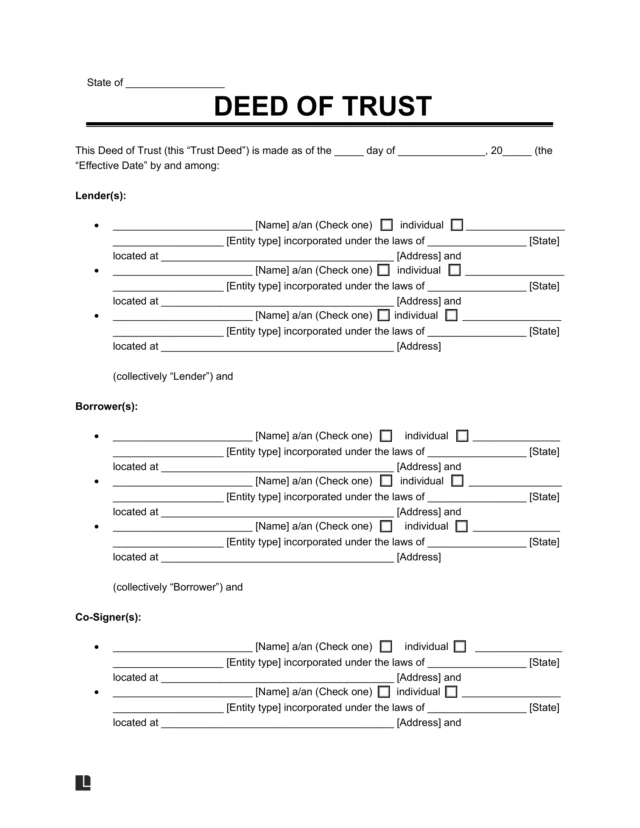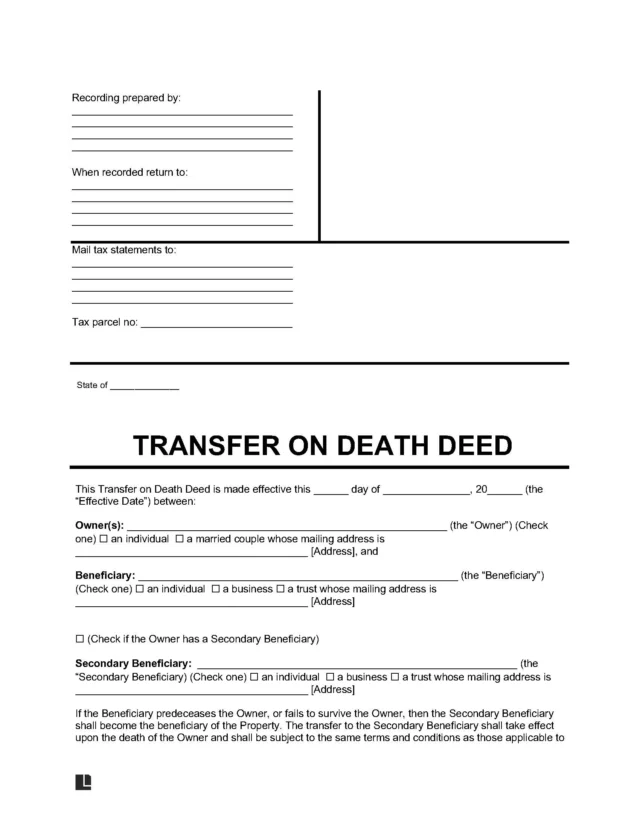What Is a Quitclaim Deed?
A quitclaim deed is a legal document that transfers whatever interest a grantor has in real property. By signing it, the grantor gives up, or “quits,” any claim to the property.
Unlike other deeds, it makes no guarantee that the grantor actually owns the property and offers no warranties about a clear title. If the grantor has no ownership, the grantee receives nothing.
For this reason, quitclaim deeds are most often used in situations built on trust, such as transfers between family members, moving property into a trust, a divorce, or correcting a title error.
Quitclaim Deed or Quick Claim Deed?
A quitclaim deed form may be mistakenly called a “quick claim deed,” but “quit claim deed” or “quitclaim deed” is the correct legal term.
Quitclaim vs Warranty Deed
Both quitclaim and warranty deeds transfer property ownership, but they offer different levels of protection.
- Use a quitclaim deed when a trust already exists: It transfers only the grantor’s interest and makes no promises about ownership or clear title. If the grantor owns nothing, the grantee gets nothing.
- Choose a warranty deed for real estate sales: It guarantees the grantor owns the property and that the title is clear. This protects the buyer from future claims and is the standard option in property transactions.
Overall, quitclaim deeds fit trust-based or family transfers, while warranty deeds work best in sales where buyers need full assurance.
When to Use a Quitclaim Deed
A quitclaim deed is rarely used in property sales because it doesn’t guarantee a clear title. Instead, it works best in situations where trust already exists. Common examples include:
- Parents transferring property to children
- Spouses adjusting ownership in divorce
- Transferring property to a living trust for estate planning
- Correcting errors in a title
The repercussions of a quitclaim deed should be weighed carefully. It is faster and simpler than other deeds but comes with less protection. The deed only transfers the interest the grantor actually owns, and there is no promise of a clear title.
That means liens or mortgages may still remain with the property. To avoid mistakes and reduce disputes, it is always best to prepare the deed using a state-specific form.
Other Types of Deeds
If you want to explore other ways to transfer property ownership, read our guide on the different types of deeds.
Quitclaim Deed Forms – By State
- Alabama
- Alaska
- Arizona
- Arkansas
- California
- Colorado
- Connecticut
- Delaware
- District of Columbia
- Florida
- Georgia
- Hawaii
- Idaho
- Illinois
- Indiana
- Iowa
- Kansas
- Kentucky
- Louisiana
- Maine
- Maryland
- Massachusetts
- Michigan
- Minnesota
- Mississippi
- Missouri
- Montana
- Nebraska
- Nevada
- New Hampshire
- New Jersey
- New Mexico
- New York
- North Carolina
- North Dakota
- Ohio
- Oklahoma
- Oregon
- Pennsylvania
- Rhode Island
- South Carolina
- South Dakota
- Tennessee
- Texas
- Utah
- Vermont
- Virginia
- Washington
- West Virginia
- Wisconsin
- Wyoming
How to Fill Out a Quitclaim Deed
When filling out a quitclaim deed, it helps to ask the right questions at each step. These checks make sure the transfer is accurate and legally valid.
- When does the deed take effect? Enter the date the quitclaim deed will be signed and later recorded.
- Who is giving up the property? List the grantor, the current owner, giving up their interest in the property.
- Who is receiving the property? Name the grantee, who will only receive the grantor’s interest without any title guarantee.
- How is the property described? Include the assessor’s parcel number (APN), the full street address with city, county, and ZIP code, and the legal description from a prior deed, or attach it as Exhibit A.
- What amount is being exchanged? Record the consideration. For many family or estate planning quitclaims, this is $0.00.
- Has a notary signed off on it? The deed must be notarized, and in some states, a witness signature is also required.
- Has it been filed with the county clerk? Submit the notarized deed to the county clerk or recorder’s office where the property is located to make the transfer official.
Answer these questions carefully to ensure your quitclaim deed is filled out correctly. By double-checking each step, you reduce the risk of delays, disputes, or rejected filings. Our quitclaim deed form keeps the process clear and straightforward from start to finish.
Quitclaim Deed Sample
Here’s a sample quitclaim deed form that shows the standard format and required details. When ready, you can customize the template to meet your needs and then download it in PDF or Word format.







